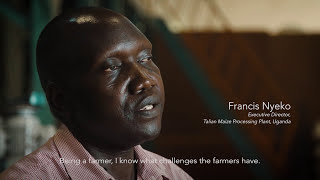The below list is inspired on this post: 21 Podcast Recording Tips For Polished Episodes at Castos.
Use the right equipment
Do not record a podcast with your laptop’s microphone. A smartphone with headphones is the best and easiest option it has the biggest impact on your audio quality.
Warm up your voice
Rather than going into your session cold, warm up your mouth and vocal cords by practicing your script or saying a few tongue twisters. Properly warming up will improve your dictation and keep you from stumbling over words. There’s nothing better than delivering your points flawlessly the first time around.
Record in a small, quiet room if possible.
Record episodes in the smallest and quietest room possible to reduce outside noise and echoes. Shut your windows and doors, turn off any machines or devices that make a constant noise, and put your kids and pets somewhere they won’t disturb you for the duration of the podcast. Fill your recording environment with soft items (couches, pillows, carpet, etc.) that absorb sound to muffle any errant noises.
Create a brief noise profile
Pause for four or five seconds at the beginning of your recording to create a noise profile. Stay absolutely silent and eliminate all environmental noise.
Adopt proper microphone distance
Place your microphone at the same height as your mouth. Then sit a few inches back and have the pop filter between your mouth and the mic. Next, focus on your mouth’s distance from the microphone setup and adjust your body for the desired volume level. Remember, the closer you are the mic, the louder your voice will sound. While you can alter your voice’s volume level during post-production to keep it consistent, reduce your editing time by keeping your mouth the same distance from the mic while recording.
Keep your body still
Moving your body around creates background noise while recording. This happens a lot if you use earbud headphones. The wire lays close to your chest which causes the microphone to rub against your shirt and collar. Try to stay still in your chair with your feet planted. Avoid moving things around on your desk. If you print your notes on paper, move them around as silently as possible too.
Resolve sound issues early
Make a test recording before you start your episode. If there’s a problem with your microphone or you can hear construction crew outside, don’t try to power through. Identify and resolve audio issues from the start or even wait to record. The worst case scenario is recording a full episode only to find there’s a larger issue you can’t fix in editing.
Record with headphones
While it’s possible to record a podcast episode without headphones, you’ll catch a lot of audio feedback. Everyone needs to wear headphones so no need to waste precious editing hours cleaning it up.
Stay quiet while others speak
It’s tempting to drop in simple phrases like “yes” and “right” and “okay” while your guests speak. Those are natural parts of language that we use without realizing. Yes, we can remove them during editing, but that’s a lot of unnecessary work. It’s easier to limit interjections and allow your guest or co-host to complete their thought.
Leave audio cues for mistakes
Mistakes happen. They aren’t stuck in your episode forever because you aren’t performing live. Slicing out mistakes is basic podcast editing, but you need to give yourself a cue to find them in the track.
Fortunately, there are a few ways to do this. You can add a spoken marker where you say “remove the story about the pizza restaurant.” Then give a few second pause and keep going. During editing, we can find those pauses, and remove the mistakes.
Stay hydrated
Drink at least a glass of water before you record. This will settle your stomach, loosen your mouth, and help your focus. It’ll also reduce any mouth clicks, the natural clicking and popping noises we make as our mouths dry.
Our stance is it’s better to drink more water and pause to use the bathroom once or twice than suffer the effects of dehydration.
Record your podcast with a smartphone or computer or zoom
The purpose is to make the post-editing and post-production as easy as possible. If you have multiple people speaking on your show, record each on their own channel. This will give you control over their individual volumes and noise profiles during editing.
You can have each person record themselves on their own smartphone and/or computer or use a recording software with a multi-track recording feature.
If you use Zoom to record remote interviews, check out the video tutorial on how to record separate channels:
Don’t be afraid to take a break
Try breaking your podcast into segments with logical places for you to take a break. It’s perfect time double check the audio for any issues, grab more water, and stretch to stay loose for your entire recording session.
Breaks are also good opportunities to discuss what’s next with your co-host or guest. You can plan your conversation, review notes, and even rehearse.




